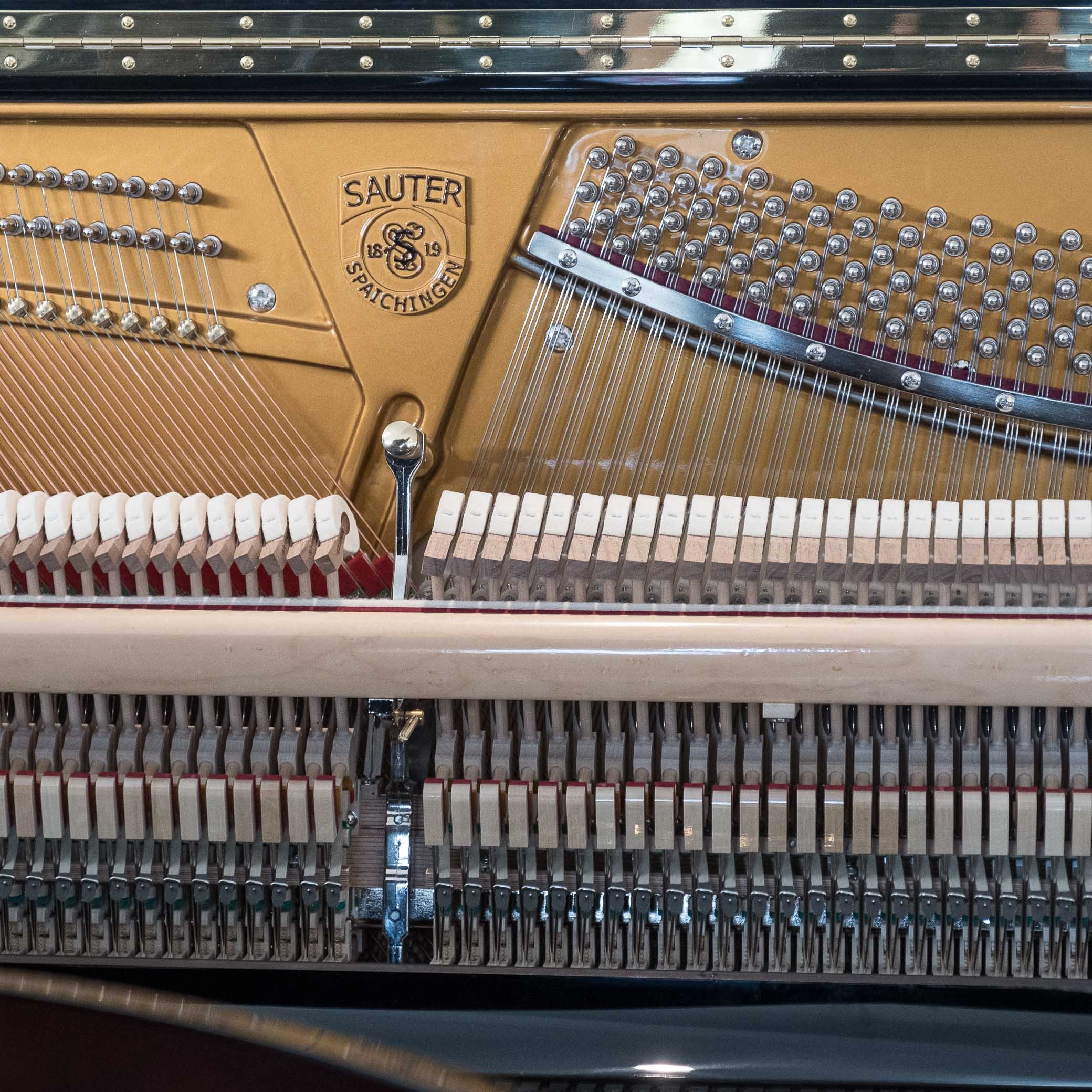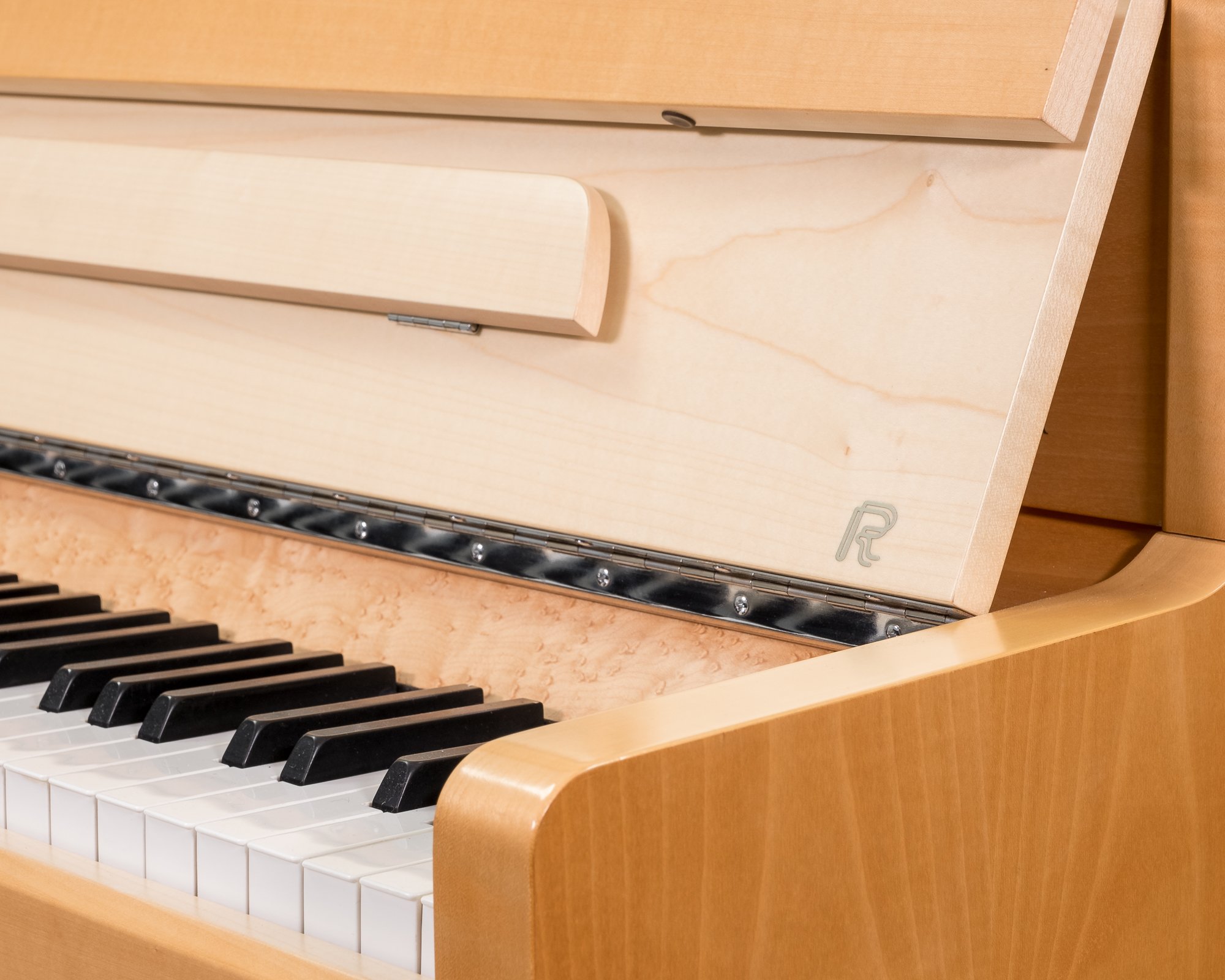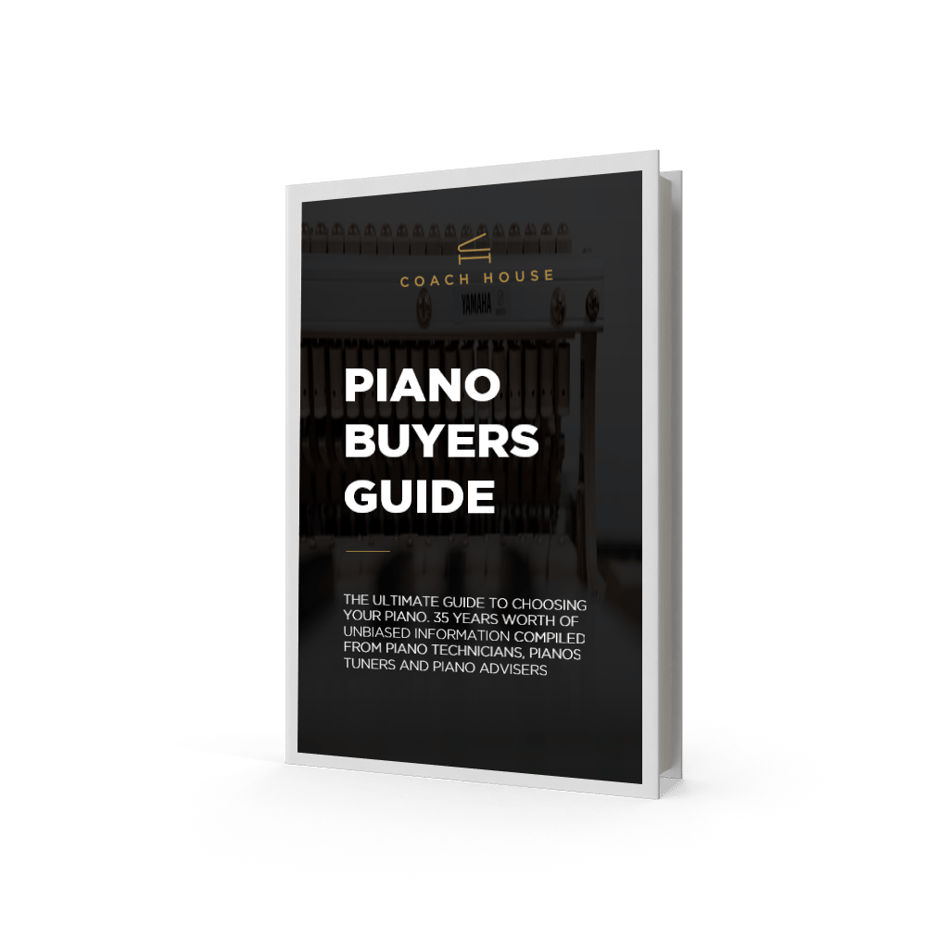In over 30 years in the piano industry, one of the most common questions I have been asked is, what is the main difference in the playing experience between an upright piano and grand piano?
Aside from the obvious difference in the way the sound is projected between an upright piano and a grand piano, the answer to this question concerns the touch.
An upright piano action works on very different principals to a grand piano action.
The hammer on an upright is striking the string from a vertical position. To enable the hammers to return to their resting position, they require the assistance of tapes and springs. Grand piano hammers strike the string from a horizontal position and the hammer return relies purely on gravity.
The result of this is that for a note to be repeated on an upright piano, the hammer needs to return fully to its resting position before it can be engaged again, meaning that the key must be released before being depressed again.
If you play a note on a standard upright piano and try to play it again before you have fully released the key, then the hammer will not strike the string and you will not hear a sound.
On the other hand, with a grand piano if you depress the key before you have fully released it, the hammer will strike the string again and a note will sound. This means that on a grand piano, faster repetition is easier, whereas on an upright, you must be much more precise in your technique.
There is one piano manufacturer that has created a solution to this with its upright pianos. The German premium manufacturer Sauter has developed the ‘double repetition’ action for most of its range of upright pianos.
With a Sauter upright the touch is more akin to a grand piano. You do get a real sense that you are playing a grand piano, particularly when you are performing repertoire that contains fast scalic or arpeggio passages where quick repetition of notes is required in the music.
The Sauter ‘double repetition’ action is a stand-out development in piano evolution. For anyone who wants the playing experience of a grand piano, but can only accommodate an upright, this is the perfect solution.


Added to this, the build quality and quality of parts and materials makes Sauter the equal of any premium manufacturer.
Since we added Sauter to our range of pianos, we continue to be amazed by the attention to detail, value for money, and sheer beauty of Sauter upright and grand pianos.
If you are thinking of investing in an upright piano, I can quite honestly say that in my 30 plus years in the piano industry, the Sauter models with the ‘double repetition’ action are the most impressive uprights I have ever experienced.
David Halford is the Education Business Manager for Coach House. In over 30 years in the piano trade, he has worked for Yamaha, Steinway & Sons, Bösendorfer and Kemble. His clients include many of the UK’s leading schools and music Conservatoires, as well as concert artists and celebrities.
Recommended
Articles
The Bösendorfer Porsche Piano: A Masterpiece of ...
Which Piano is Best? A Grand Piano Comparison
Coach House Pianos Gift Self-Playing piano to Morriston ...
Back to Blog







